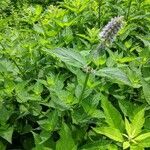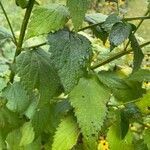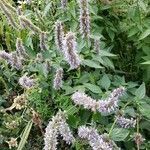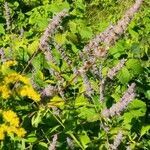A perennial plant up to 90 cm tall and spreading to 40 cm wide. The leaves are 7.5 cm long and have coarse teeth along the edge. They are greyish green. The leaves are downy on the underside. They have a pleasant smell. They smell of anise. The stems are erect. The flowers are tiny and violet-blue. They have 2 lobes. They occur in dense spikes.









